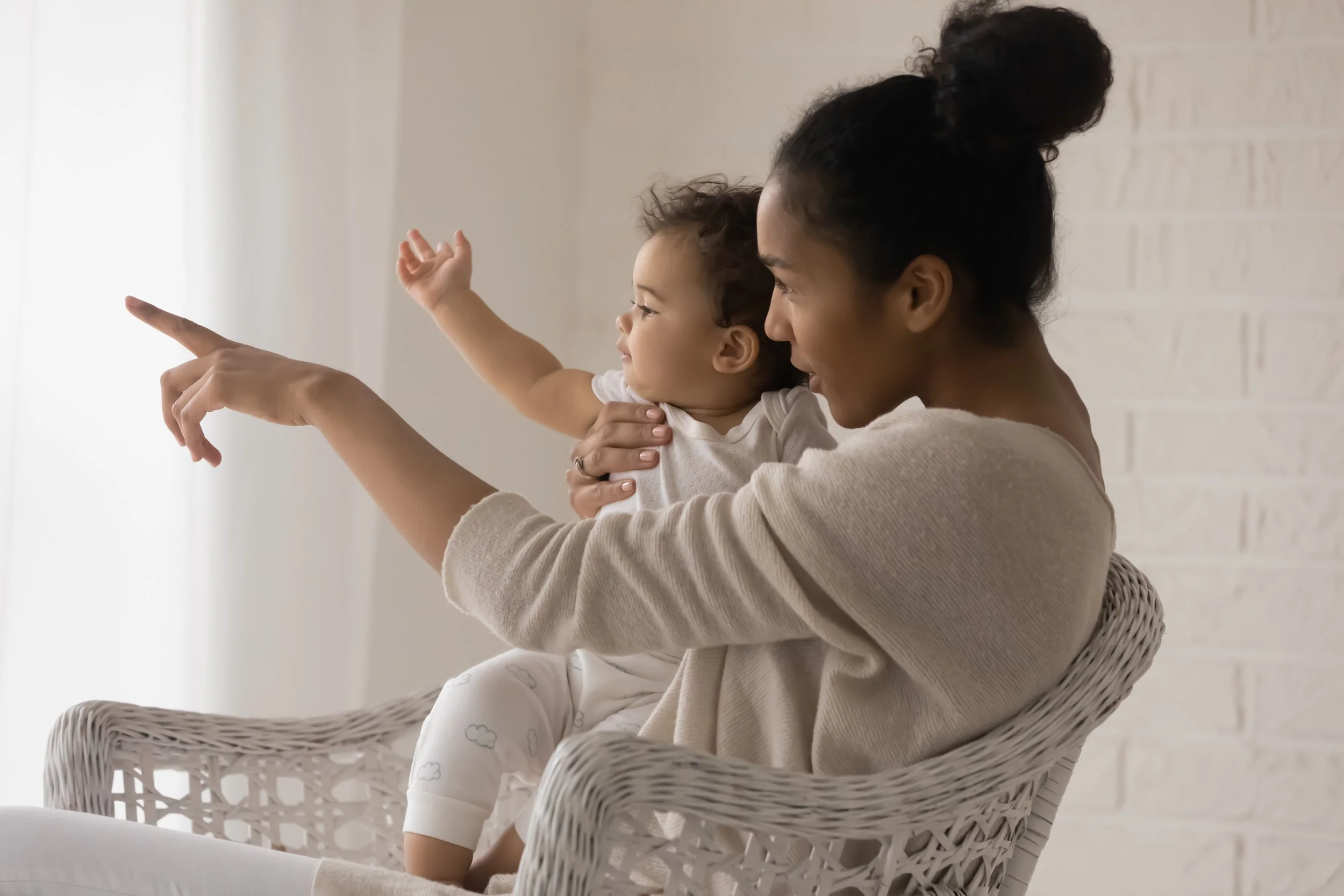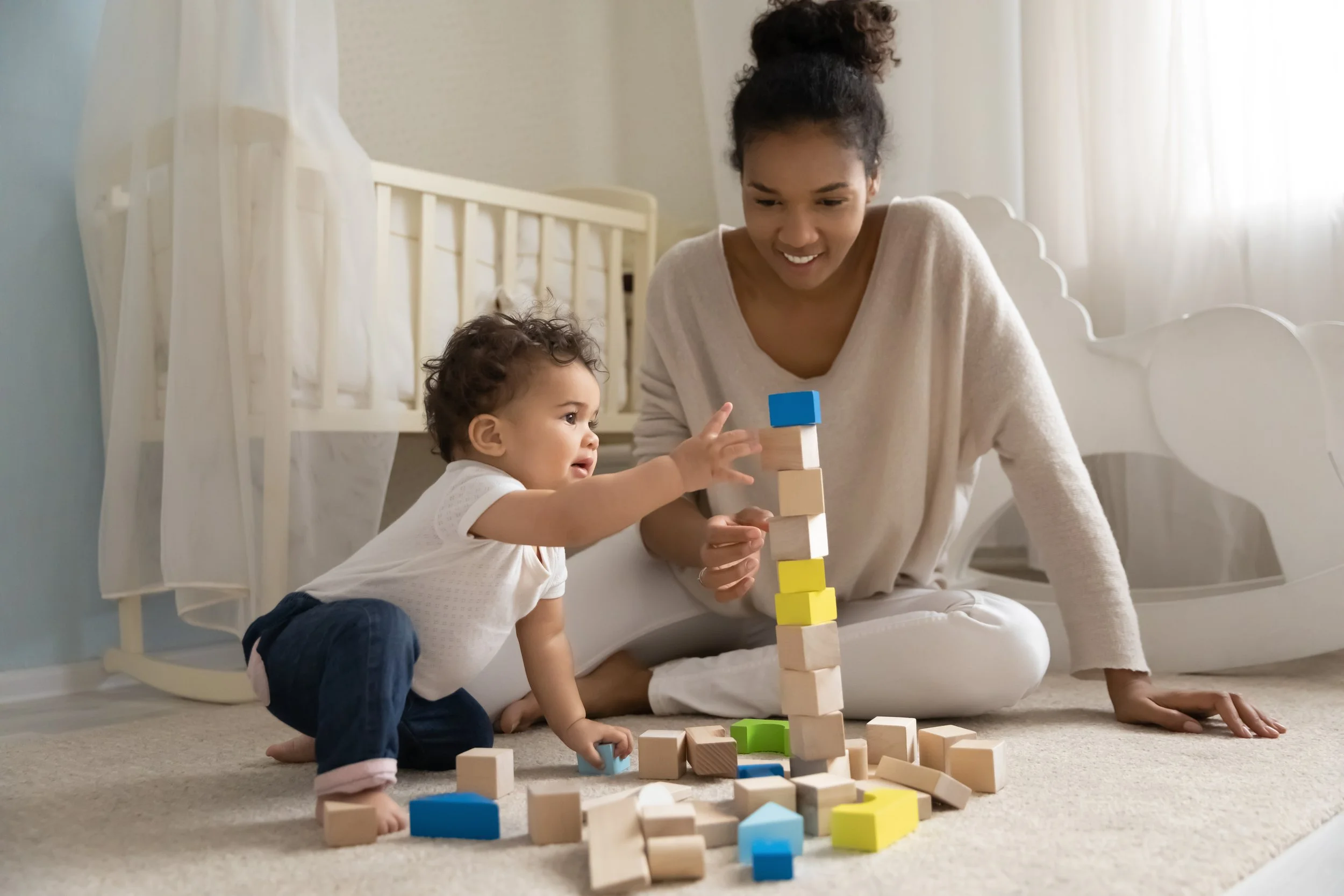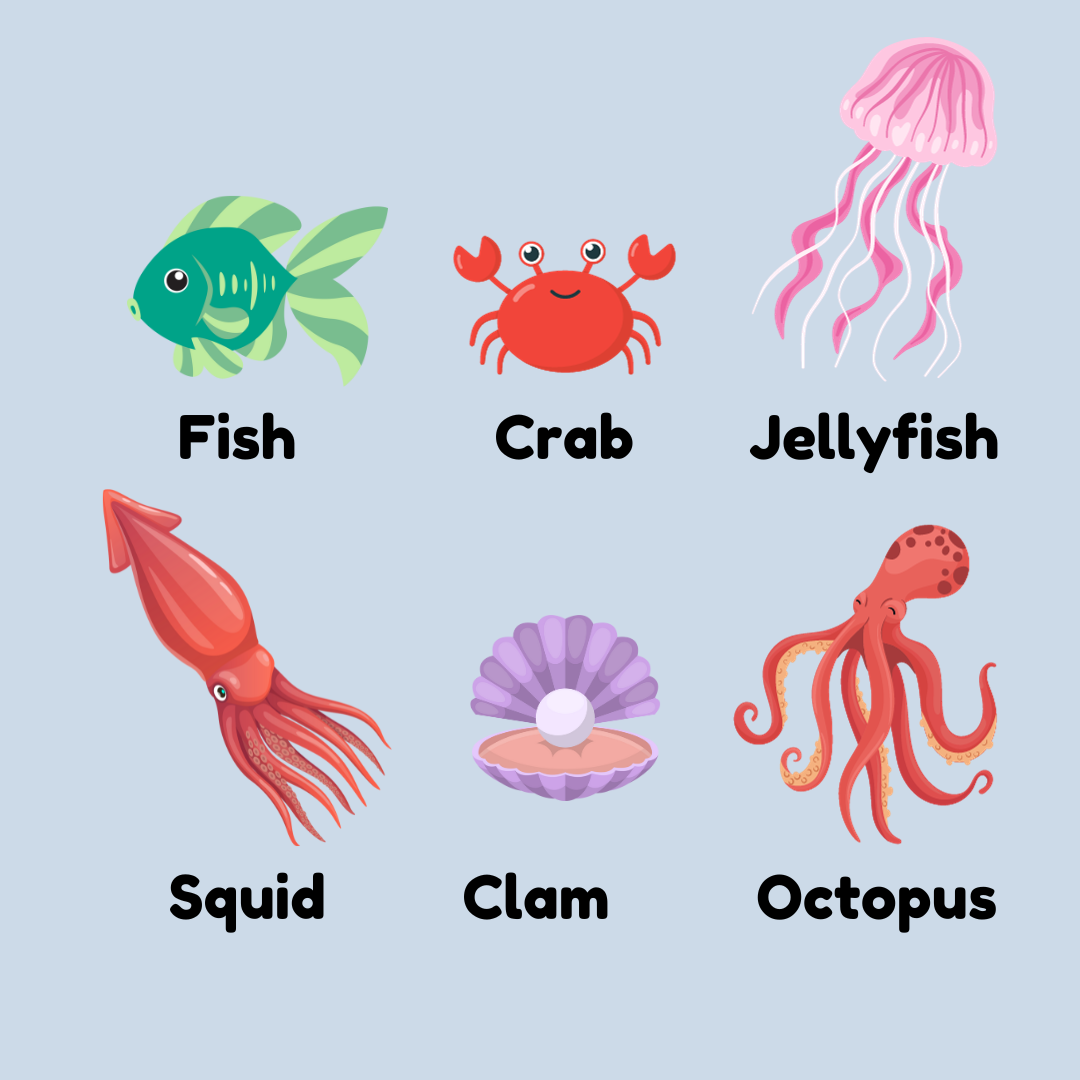When do babies start pointing?
Pointing:
Imagine a baby drops their snack from the high chair. Their dad hasn’t noticed, but he sees the baby point down. He naturally looks down too and notices the snack. “Oh!” he says, “You dropped your snack!”
A toddler wants a toy on a high shelf. They point to the toy and then start switching their eye gaze between the toy and their Nana. Nana looks on the shelf too and sees the ball. “Do you want your ball?” she asks.
A family is sitting at a park. An airplane quietly flies over and the baby points upward at the airplane. The parents look up and notice the airplane too. “Wow! What a cool airplane!” say the parents.
Pointing is such an exciting milestone. It is one of the first times your child will give you a concrete message.
Parents are often eagerly awaiting this stage and wonder when it will arrive.
When do babies start pointing?
Babies start pointing around 9-12 months.
Sometimes babies will start with an open-hand point to request before they switch over to pointing with a single finger. Most kids will use their index (“pointer”) finger, but some kids will point with a different finger, even their middle one!
What is the role of pointing in communication development?
Pointing may seem simple, but it is actually a very important part of development. Pointing is an easy way for two people to start thinking about the same thing. In the examples at the beginning of this post, the children are able to get their caretakers to start thinking about something specific (a fallen snack, a toy, an airplane.)
The reason that this is important is because language is a way for people to share ideas with each other. Pointing is one of the first ways that young children are able to accomplish this.
To learn to be good communicators, children learn to point first and then add words second.
Are there different kinds of pointing? Which ones should my child do?
We as people point to :
SHOW (*points* Look at our neighbor’s new car!)
REQUEST (*points* Can I please have this donut with sprinkles?).
We point to things that are up close (Look at this weird mark on my arm) and far (Go that way for two blocks, then turn right.)
Children learn at an early age all of those different kinds of pointing. They will start by pointing to show, and then will soon add pointing to request. If you do not respond right away, a typically-developing child will also shift their eyes and look at you to “check” that you are paying attention.
How do I encourage pointing?
Like most other skills, children learn best by example. Point to things that interest your child. Say, “Look, there’s a kitty! Look, there’s your missing ball!” If you have another communication partner in your home (like another parent or older sibling,) be sure to model pointing while you request (“Can you please hand me my CUP” while pointing.)
When to talk to your child’s pediatrician
By 14 months a child will be a competent pointer and will often be adding words to their gestures. If by 14 months you have not seen your child point to request and to show, you should consider bringing that up with your child’s pediatrician.
What comes after pointing?
There will be a period of time when a child points without saying anything, or maybe their point will be accompanied by a sound or a whine. When the child starts talking, pointing won’t go away. Rather, they will start adding single words and telegraphic phrases while they point. Eventually, pointing will decrease as more complex language can fill in the gaps, but pointing is a useful gesture that persists throughout our lifetimes.
Let’s Review What We’ve Learned About Pointing:
-
Babies point to communicate an idea to their caretakers. They might point to show (“look at that!”) or to request (“I want that one”.) This is an important milestone because it means that the child is starting to understand the concept of sharing ideas with other people.
-
Babies start to point 9-12 months of age. Premature babies may be slightly delayed as they work to catch up on their milestones. However, if a child isn’t pointing by 14 months, it is a good idea to bring this up with a pediatrician.
-
Typically-developing children naturally start to point to communicate with others by the time they are 12 months old. They will also usually use their eyes to communicate while they point (such as looking at the thing they are pointing to, then looking at their parent to check in.)
If a child does not point or use their eyes to communicate by 14 months, this could be the sign of a language delay or other developmental issue, especially if they also aren’t talking. Parents should consider bringing up any concerns about pointing and communicative eye contact with their pediatrician.
Continue exploring the Toddler Talk blog:
Written By: Stephanie Burgener-Vader, MA CCC-SLP
References List:
© 2020-2025. Stephanie Keffer Hatleli, MS CCC-SLP. All Rights Reserved.
The content offered on ToddlerTalk.com is for informational purposes only. Toddler Talk is not engaged in rendering professional advice, whether medical or otherwise, to individual users or their children or families. No content on this site, regardless of date, should ever be used as a substitute for direct medical advice from your doctor, speech language pathologist, or other health professional. By accessing the content on ToddlerTalk.com, you acknowledge and agree that you are accepting the responsibility for your child’s health and well-being. In return for providing you with information related to home speech and language practice, you waive any claims that you or your child may have as a result of utilizing the content on ToddlerTalk.com.









Explore language tips for potty training tailored to your child's communication stage. From toddlers who are just beginning to talk to children speaking in sentences, learn how to use gestures, sign language, storytelling, and consistency to support your potty training journey.